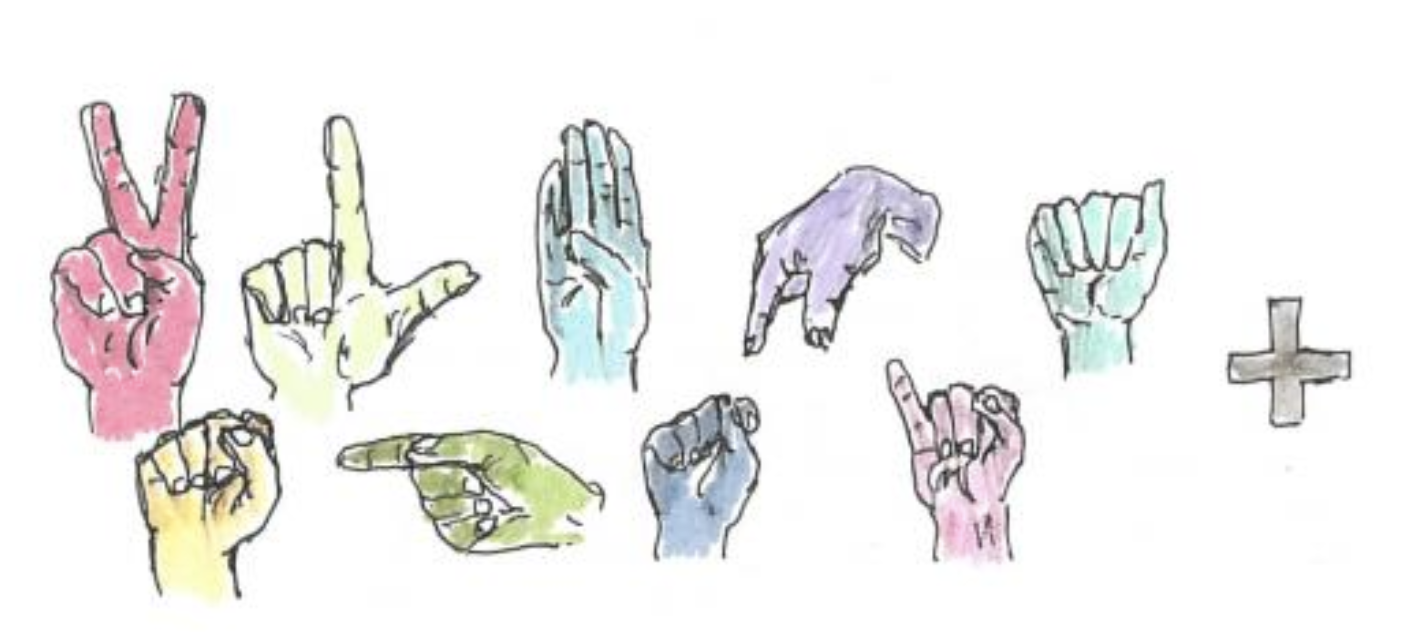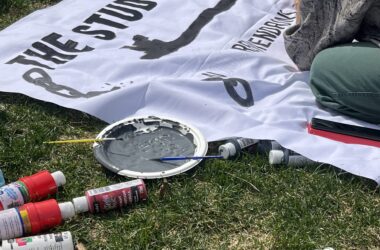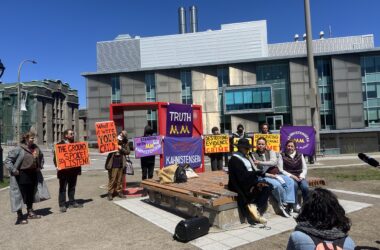Mat Kuntz is an American Sign Language (ASL) teacher who works with several organizations including Seeing Voices, which seek to make communities more deaf-aware and deaf-accessible. On Oct. 15, he presented the basics of queer ASL to attendees at Wilson Hall. After a short introduction by Meryem Benslimane, equity education advisor and chair of the planning committee of Queer History Month, Kuntz took the stage. Kuntz, who is queer and hearing-impaired, gave the lecture completely in ASL, with Sandra Saoumaa serving as an interpreter.
Kuntz first emphasized that ASL is only one of many sign languages across the world.
“Canada has two sign languages, ASL and LSQ, which stands for ‘Langue Signe Québécoise’,” Kuntz signed. “These languages were finally recognized under Bill C-81 as a primary languages for deaf people. Now that the government has recognized [sign language ], we can make some changes [in how deaf people are expected to conform to hearing society].”
Kuntz explained some of the difficulties deaf individuals face in everyday life. Since ASL is not widely taught, many spaces remain inaccessible for its users if an interpreter is not present. Even job interviews can be impossible unless someone else is there to translate.
“There is a lot of frustration around the lack of accessibility,” Kuntz signed. “Communication is always an issue and I don’t always have the time [to educate everyone I meet]. So we are working on building awareness for that, and training [people] to make things more deaf-accessible. I want to expose [people] to deaf culture and raise awareness about deaf people’s access and needs.”
When teaching ASL, Kuntz went over each sign slowly and carefully, demonstrating it several times. He encouraged the audience to practice, giving everyone a chance to repeat the sign until they felt comfortable. Kuntz also provided everyone with a paper handout with pictures of the signs before he proceeded to do demonstrations.
Kuntz introduced signs for a wide range of queer topics, from gender to sexuality. He presented all of the official queer signs, including words for “fluid,” “spectrum,” and “drag queen/king.” However, Kuntz pointed out that the list was by no means complete, lacking terms like “nonbinary,” for example.
“The deaf community is behind in coming up with signs for everything, so just give us time to catch up with the vocabulary,” Kuntz signed.
At the end, Kuntz thanked everyone for coming, and participants responded by raising their hands and wiggling them, the ASL sign for applause.
While this workshop was only a brief introduction into ASL, there are many opportunities to continue learning sign language. Kuntz teaches sign language courses of different levels at the Canadian Hearing Society, which he recommends for anyone trying to learn more.
Jim Mejino, U4 Arts, and the main coordinator of this event, said that the idea for an an ASL event as part of Queer History Month plays an important role in raising awareness about intersectionality within the queer community.
“[Queer History Month] works with the Union for Gender Empowerment, and part of our mandate is intersectionality,” Megino said. “We want to celebrate the community and bring more awareness and education about how disability and queerness affects people.”
Benslimane stressed the importance of including events that address queer individuals with disabilities.
“Last year was the first edition of Queer History Month,” Benslimane said. “[We] wanted to have an event talking about being queer and folks with disabilities, so to have an event around queer ASL made sense [.…] We wanted to make the calendar as inclusive as possible. That is also why we decided to have it again this year.”









Sad to see this:
“Canada has two sign languages, ASL and LSQ, which stands for ‘Langue Signe Québécoise’,” Kuntz signed. “These languages were finally recognized under Bill C-81 as a primary languages for deaf people.
Canada does not have two sign languages. There are something like 7+ manual languages in Canada. There is of course ASL and Langue des signes québécoise (the proper name) as well as the other settler languages: Maritime Sign Language (MSL) and ProTactile. Then there are the many manual Indigenous languages like Hand Talk, Secwepemcékst, Atgangmuurngniq (or Inuit Sign Language), Ktunaxa Sign Language, Oneida Sign Language and perhaps more.
That was a pretty colonial erasure and suppression of other cultures on Kuntz’s part. It may be an accidental oversight, but it is still very shitty 🙁
(To note, even Bill C-81 recognised part of this: ASL, LSQ and ISLs–or Indigenous sign languageS–were recognised as the official languages of the d/Deaf communities)